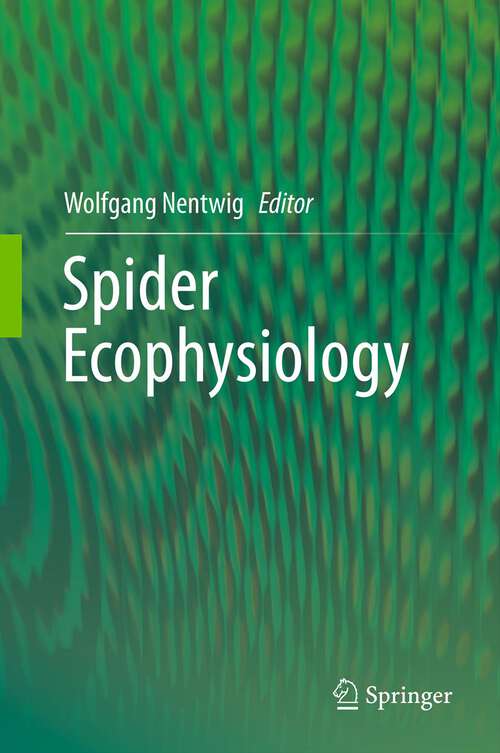Spider Ecophysiology
By:
Sign Up Now!
Already a Member? Log In
You must be logged into Bookshare to access this title.
Learn about membership options,
or view our freely available titles.
- Synopsis
- With over 43,000 species, spiders are the largest predacious arthropod group. They have developed key characteristics such as multi-purpose silk types, venoms consisting of hundreds of components, locomotion driven by muscles and hydraulic pressure, a highly evolved key-lock mechanism between the complex genital structures, and many more unique features. After 300 million years of evolutionary refinement, spiders are present in all land habitats and represent one of the most successful groups of terrestrial organisms. Ecophysiology combines functional and evolutionary aspects of morphology, physiology, biochemistry and molecular biology with ecology. Cutting-edge science in spiders focuses on the circulatory and respiratory system, locomotion and dispersal abilities, the immune system, endosymbionts and pathogens, chemical communication, gland secretions, venom components, silk structure, structure and perception of colours as well as nutritional requirements. Spiders are valuable indicator species in agroecosystems and for conservation biology. Modern transfer and application technologies research spiders and their products with respect to their value for biomimetics, material sciences, and the agrochemical and pharmaceutical industries.
- Copyright:
- 2012
Book Details
- Book Quality:
- Publisher Quality
- ISBN-13:
- 9783642339899
- Related ISBNs:
- 9783642339882
- Publisher:
- Springer Berlin Heidelberg
- Date of Addition:
- 11/16/16
- Copyrighted By:
- Springer
- Adult content:
- No
- Language:
- English
- Has Image Descriptions:
- No
- Categories:
- Nonfiction, Science, Animals
- Submitted By:
- Bookshare Staff
- Usage Restrictions:
- This is a copyrighted book.
